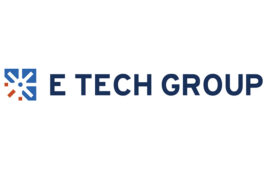
Julianne Hartzell | Partner | Marshall, Gerstein & Borun
Patents offer valuable protection for new products in the medical device industry, but patents laws and trends are changing quickly. Here’s a quick update on recent changes.
Post-grant proceedings
In recent years, the U.S. implemented major changes to its patent system when the provisions of the America Invents Act took effect. One of the most game-changing features of this law was the creation of new post-grant proceedings, including Inter Partes Review (IPR) and Covered Business Method (CBM) reviews. Subject to certain restrictions, IPRs and CBMs offer a forum for entities to challenge the validity of a patent in the patent office using a method that is quicker and less expensive than district court litigation. In these proceedings, invalidity also only needs to be proven by a preponderance, rather than the clear and convincing standard that is required outside the patent office. The administrative law judges who handle these proceedings also frequently have technical backgrounds that help them understand the technology at issue, and what one of ordinary skill in the art would have been likely to know at the time the patent was issued.+
For these reasons, those challenging the validity of a patent have had high rates of success. The Patent Trial & Appeal Board (PTAB) has enacted recent rule changes that are expected to offer patents owners additional tools to defend against these invalidity challenges. However, even with the proposed PTAB changes, patent owners need to understand the profound effect these proceedings have had on patent strategy. Before enforcing a patent, a patent owner must now consider the strength of its patents and the potential that an accused infringer now has to use this alternative mechanism to challenge the patent. Similarly, an accused infringer needs to begin thinking early about its strongest invalidity case, because there are time limits on when these post-grant proceedings can be filed.
Patentable subject matter
Similarly, recent patent cases have changed the way medical device companies draft patents. Patent law has always included a requirement that a patentable invention be a “new and useful process, machine, manufacture, or composition of matter, or any new and useful improvement thereof.” 35 U.S.C. § 101. However, courts have begun interpreting that provision much more narrowly than in the past, now excluding patent protection for wider categories of inventions that could be characterized as an abstract idea, law of nature, or natural phenomenon. In the medical device field, it’s now more difficult to obtain patent protection for software or the computer-implemented features of a medical device or for diagnostic methods that determine a physiological condition. Additionally, because patent examiners are more likely to issue rejections on the basis of section § 101, the price to prosecute patents involving software and diagnostic methods – and the time to obtain issuance of a patent in those areas – have increased.
To avoid these types of rejections by the patent office, patents attorneys must be more strategic in drafting claims. Some strategies to improve the likelihood of patent issuance are to focus the claims on physical transformations accomplished by the invention; synergies or unexpected results of combining elements; or improved functioning of the systems involved. Additionally, it’s helpful for the patent specification to include as much technical detail as possible about the problem the inventors were trying to solve, and about how the features of the invention are new and different.
Entities covered by patent claims
Similarly, it’s important for medtech patent owners to be strategic in their understanding of the entity to be covered by its patent claims. Since 1996 and the implementation of 35 U.S.C. § 287(c), medical practitioners of a medical activity or related healthcare entities are not liable for patent infringement. Accordingly, medical device patent owners tend to direct their claims to cover the makers of medical devices, rather than the people who use them. It’s important to consider who will actually be performing the steps of the patent claims and how those entities are instructed to do so.
A recent decision by the Federal Circuit Court of Appeals (which has jurisdiction over all patent appeals), Akamai Technologies v. Limelight Networks, expanded the scope of patent infringement to cover situations in which multiple steps of a patent claim are performed by different entities. There was never any doubt that, if one entity performed all of the steps of a patent claim, it was liable for patent infringement. Similarly, if that entity performed only some steps, but directed or controlled conduct of the rest, it was still liable. But this definition excluded a company that offered a process to customers, but customers not under its direct control who performed some of the steps of the process.
Under the Akamai decision, patent infringement liability can now also be found when an accused infringer conditions receipt of a benefit to a third party on performance of the additional steps, and establishes the manner of timing of that performance, or when all participants in performing the steps are involved in a joint enterprise. This expanded definition of direct infringement helps patent owners to ensure that the claims issued are actually able to cover an entity that will be found to infringe.
ITC jurisdiction over digitally imported data
The International Trade Commission, which has the authority to stop the importation into the U.S. of “articles” that infringe a patent, is a popular alternative to district court litigation. In a recent decision, however, the Federal Circuit determined that the ITC’s authority is limited to material things and doesn’t cover electronic data transmissions.
In that case, ClearCorrect Operating v. ITC, the patent related to the production of dental aligners. The accused infringer, ClearCorrect, scans physical models of patient’s teeth in the U.S. and creates a digital recreation of the patient’s initial tooth arrangement. The digital recreation is electronically transmitted to a related company overseas, which determines a final alignment for the teeth along with intermediate tooth positions moving toward the final alignment. The overseas entity creates digital models of the intermediate positions and transmits them to the U.S., where ClearCorrect makes 3D prints of the models and manufactures the aligners.
The appeals court decided that the ITC did not have the authority to stop importation of digital data. This decision is limited only to ITC proceedings. There are no similar restrictions on the jurisdiction of U.S. district courts that would preclude finding patent infringement based upon the acts of importing digital data.
It is helpful to consider these recent changes in patent law when drafting patents to protect your inventions and when you are making decisions about how to enforce them.
DISCLAIMER: The information in this article is for informational purposes only and is not legal advice. The views expressed are those of the authors and are not to be attributed to the firm or clients.




